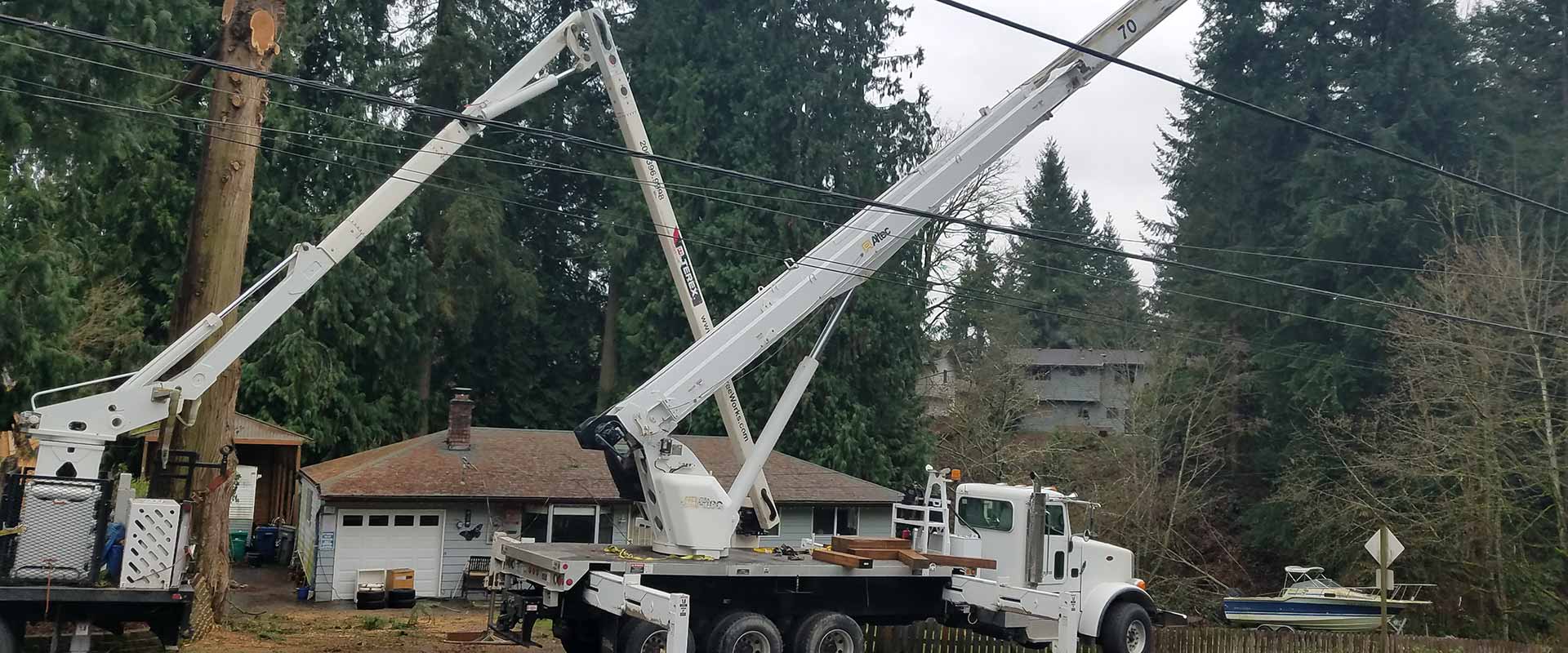Tree removal can be complicated, especially in confined spaces, where every move counts. Whether you’re a homeowner or a business operation, understanding what tree removal entails is essential to ensure safety and efficiency.
This guide will walk you through everything you need to consider when performing tight-area tree removal, from assessing risks to deciding when to hire professionals for the job.
Safety First: When Tree Removal Is Necessary
Knowing when tree removal is necessary can save you from future headaches or hazards. If a tree poses a risk to your property or surroundings, it’s time to act.
Here are some situations when it’s essential to call professionals for tree removal services:
- Hazardous Trees: Trees with weakened structures or severe damage can collapse unexpectedly, posing a risk to people, pets and nearby property.
- Damage to Structures: Trees growing too close to homes, fences or other structures can compromise foundations, roofs and pathways.
- Power Line Interference: Overgrown branches touching or nearing power lines can lead to dangerous outages, fires or electrocution risks.
- Construction Projects: Removing trees obstructing renovations or landscape designs ensures your project progresses smoothly and safely.
Acting promptly in these scenarios protects your home and keeps your property safe. Contact professional tree removal specialists if you notice any of these warning signs.
The Challenges of Tree Removal in Confined Spaces
Tree removal in confined spaces presents unique challenges that require expertise and meticulous planning. Unlike open areas, these environments require a specialized approach and specialized equipment, such as cranes.
- Restricted Access: Urban settings and compact yards often limit the maneuverability of equipment and personnel, necessitating innovative solutions to complete the job effectively.
- Proximity to Structures and Utilities: The presence of nearby buildings, vehicles and utility lines increases the risk of potential damage, requiring precise handling and careful coordination.
- Safety Requirements: Confined spaces require thorough planning and execution to safeguard workers, protect surrounding property and mitigate potential hazards.
Risk Assessment and Strategic Planning
Effective tree removal starts with careful planning and assessment. A professional approach ensures the safety of the on-site crew while minimizing disruptions and property damage.
Here are the essential steps involved in the process:
- Thorough Site Evaluation: Professionals assess the tree’s condition, the surrounding environment and all potential obstacles. This includes identifying nearby structures, utilities or landscape features that could be affected.
- Identification of Hazards: They will look for signs of instability, such as weak or overhanging branches, leaning trunks or proximity to power lines, which could pose immediate risks.
- Regulatory Compliance: The experts must confirm that all necessary permits are obtained and comply with local ordinances or environmental regulations to avoid legal complications.
- Emergency Preparedness: Professional tree removal service providers develop contingency plans to address unexpected challenges, such as equipment failure or sudden weather changes, ensuring the safety of the workers and the surrounding property.
How To Remove a Tree in a Confined Space
Removing a tree in a confined space requires specialized equipment and techniques. When the tree is small and easily accessible, homeowners can handle the task themselves. However, professional assistance is highly recommended for larger or more complex situations.
Here’s how professionals handle tree removal:
1. Specialized Equipment
Professionals use advanced tools tailored to the unique challenges of a confined environment. Cranes are indispensable for safely lifting and removing large sections of trees, particularly in urban or restricted areas. Spider lifts provide excellent access to hard-to-reach spots, enabling the crew to maneuver in tight spaces without compromising safety.
2. Advanced Techniques for Precision
Tree removal professionals often use sectional dismantling to simplify the process and minimize the impact on the surroundings. This method involves cutting the tree into smaller pieces for safer, more efficient removal while maintaining high safety standards through advanced techniques.
3. Efficient Debris Removal and Cleanup
Efficient site cleanup restores the area to its original or improved condition. Professionals handle all debris efficiently, ensuring the site is clean and hazard-free.
Cost Considerations
The cost of tree removal can vary significantly depending on the project’s specific requirements. Knowing the factors influencing these costs will help you budget effectively and avoid unexpected expenses.
- Tree Size and Condition: Larger trees or those in poor health require additional labor, time and specialized equipment to be removed safely.
- Accessibility Challenges: Confined spaces or hard-to-reach areas often require advanced tools and meticulous planning, which increases the overall cost.
- Debris Removal and Disposal: Professional services typically cover the clearing and disposing of branches, logs and other debris, ensuring your property is left clean and safe.
- Emergency Services: Urgent tree removal, such as after a storm or due to an immediate safety concern, may come with higher costs due to the need for expedited service.
- Stump Removal: This is typically an additional service that adds to the total expense if you require stump grinding or removal.
Expert Solutions for Tight Area Tree Removal
Trust Eastside Tree Works for safe, expert tree removal. We specialize in tight-area tree removal with precision and care, ensuring minimal impact on your property. Contact us today to schedule your consultation.

